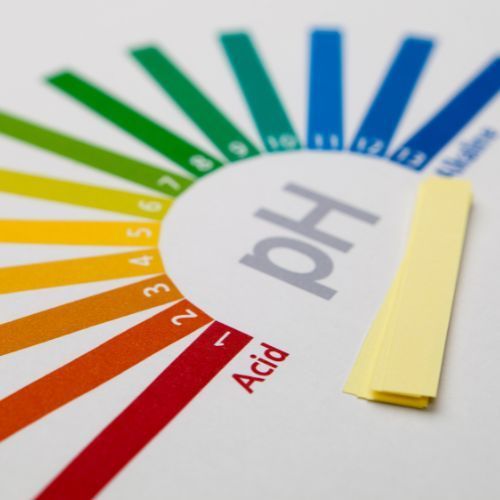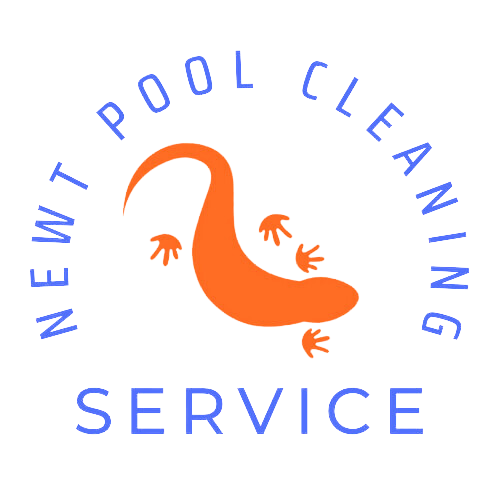What is the average life of a spa? Van Nuys, CA. The Nitty Gritty of Pool and Hot Tub Longevity in Southern California
Spas in Van Nuys, California face unique challenges...

...due to the intense sun exposure and varying temperatures throughout the year. These environmental factors can impact the longevity of your spa and influence maintenance requirements.
With proper care and maintenance, your spa can last between 10 to 15 years before needing replacement. Regular upkeep, quality materials, and protecting your spa from extreme weather conditions play a huge role in maximizing its lifespan.
Your spa's durability depends on several key factors, including the initial quality of materials, installation methods, usage patterns, and maintenance routine. Premium spas with high-grade acrylic shells and robust support structures tend to last longer than budget options with basic materials.
What are the Spa Lifespan Fundamentals?
A well-maintained spa in Van Nuys typically lasts 10-15 years. Your spa's actual lifespan depends on several key factors, including maintenance practices, usage frequency, and local climate conditions.
Regular maintenance adds years to your spa's life. This includes consistent water chemistry balancing, filter cleaning, and prompt repairs when needed.
Component Lifespans
The components of your spa have different lifespans:
- Pump: 5-10 years
- Heater: 3-5 years
- Shell: 10-15 years
- Cover: 3-5 years
Climate plays a significant role in Van Nuys spas. The warm Southern California weather can affect your spa's components, making proper shade and cover usage essential.
Usage Patterns and Longevity
Your usage patterns affect spa life expectancy. Daily use requires more frequent maintenance and component replacements compared to weekly use.
Professional servicing twice per year helps identify potential issues early. This preventive approach can extend your spa's lifespan by 2-4 years.
Indoor vs Outdoor Placement
Indoor spas generally last longer than outdoor ones due to reduced exposure to weather elements. Your spa placement decision can impact its longevity by up to 2-3 years.
Quality Tiers and Expected Lifespans
The quality of your initial spa purchase matters. Premium brands with better materials and construction typically last 12-15 years, while budget options might only reach 5-8 years.
Factors Influencing Spa Durability in Van Nuys, CA
The lifespan of your spa in Van Nuys depends heavily on local climate conditions. The hot, dry summers and mild winters create specific challenges for spa maintenance and longevity.
Water Chemistry Management
Proper water chemistry is one of the main things that will extend your spa's life. Regular testing and balancing of pH, alkalinity, and sanitizer levels prevent corrosion and scale buildup on vital components.

Environmental Protection
Key Environmental Factors:
- UV exposure from intense California sun
- Temperature fluctuations
- Dust and debris from Santa Ana winds
- Hard water common to the San Fernando Valley
The quality of your spa's cover significantly impacts its durability. A well-maintained cover protects against heat loss, debris, and chemical evaporation.
Installation and Positioning
Installation and Positioning
Your choice of installation location affects spa longevity. Placing the spa on a stable, level surface away from direct afternoon sun helps prevent structural stress and excessive wear.
Professional servicing by qualified technicians in Van Nuys can identify potential issues before they become major problems. Regular maintenance checks extend the operational life of pumps, heaters, and electrical systems.
The materials used in your spa's construction determine its resistance to local conditions. High-quality acrylic shells and reinforced cabinets withstand UV exposure and temperature changes better than lower-grade materials.
Maintenance Best Practices for Spa Longevity
Regular maintenance plays a critical role in extending your spa's lifespan. With proper care, your spa can serve you well for a long time.
Daily and Weekly Maintenance
Essential Weekly Tasks:
- Test and balance water chemistry
- Clean the filter
- Wipe down waterline and surfaces
- Check water level
You should drain and refill your spa every 3-4 months, depending on usage. During this time, thoroughly clean all surfaces and inspect components for wear.
Monthly and Quarterly Tasks
Monthly Maintenance Requirements:
- Deep clean filters or replace as needed
- Inspect cover for damage
- Check jets for proper operation
- Test GFCI protection
Maintain proper chemical levels to prevent damage to surfaces and equipment. Keep pH between 7.2-7.8 and chlorine at 1-3 ppm.
Clean or replace filters according to manufacturer specifications. Most filters need replacement every 12-18 months.
Cover Care and Protection
Keep your spa covered when not in use to maintain temperature and prevent debris accumulation. Replace worn covers to maintain energy efficiency.
Annual Professional Service
Schedule professional maintenance checks annually. A qualified technician can identify potential issues before they become major problems.
Address any unusual sounds, leaks, or performance changes promptly. Quick repairs prevent more extensive damage and extend your spa's life.
Impact of Van Nuys Climate on Spa Lifespan
Van Nuys experiences hot Mediterranean summers with temperatures frequently reaching above 90°F (32°C) and mild winters. These temperature fluctuations affect your spa's components and longevity.
Summer Heat Challenges
The intense summer heat in Van Nuys can accelerate the breakdown of your spa's acrylic shell and cover materials. Direct sun exposure can fade and weaken these materials faster than in cooler climates.
Temperature Impact on Components:
- Cover deterioration: 2-3 years faster than temperate regions
- Shell fading: 15-25% quicker UV damage
- Pump stress: Higher during peak summer months
Chemical Balance in Hot Climates
Your spa's chemical balance requires more frequent monitoring in Van Nuys due to increased evaporation rates. The warm climate accelerates sanitizer depletion and can lead to scale buildup.
Santa Ana Wind Effects
Wind-blown debris from Santa Ana winds can clog filters and strain pump systems. Installing a good quality cover and maintaining proper chemical levels helps protect against these climate challenges.
The dry climate means less natural moisture damage to electrical components, which can extend their lifespan. Your spa's wooden cabinet may need more frequent sealing to prevent cracking in the arid conditions.
Climate-Specific Maintenance Adjustments
Regular maintenance becomes especially important in Van Nuys. Checking water chemistry twice weekly and cleaning filters monthly will help combat the climate's effects on your spa's lifespan.
Common Issues and Repairs in Spa Longevity
Regular maintenance helps prevent many common spa problems. Your spa's lifespan can be significantly affected by how quickly you address these issues when they arise.
Common Equipment Issues
Common Equipment Issues:
- Pump motor failures
- Heater element burnouts
- Filter system clogs
- Control panel malfunctions
- Plumbing leaks
Water chemistry imbalances can lead to corrosion of components and damage to the spa shell. Testing and adjusting water chemistry weekly helps prevent these problems.
Early Warning Signs
Your spa cover plays a crucial role in energy efficiency and water cleanliness. Replace it when you notice signs of water absorption, cracking, or heavy wear.
Addressing small leaks promptly prevents more extensive damage to your spa's structure and surrounding area. Look for wet spots or unusual water loss as early warning signs.
Component Replacement Schedules
Repair Frequency Guidelines:
- Pump seals: Every 1-2 years
- Filter cartridges: Every 12-18 months
- O-rings and gaskets: Every 2-3 years
- Control panel: 5-7 years average lifespan
Preventive Maintenance Benefits
Professional servicing twice per year can identify potential issues before they become major repairs. This preventive approach typically costs less than emergency repairs.
Replace worn jet inserts and bearings when you notice decreased water pressure or unusual noises. These components typically need attention every 3-5 years with regular use.
Material and Construction Quality of Spas
The quality of materials and construction directly impacts a spa's lifespan. High-end spas typically use acrylic shells reinforced with multiple layers of fiberglass, while budget models often utilize rotomolded plastic.
Shell Materials and Durability
Premium acrylic shells resist UV damage, staining, and scratches more effectively than other materials. You'll find these shells maintain their glossy appearance for 10-15 years with proper care.
Frame and Support Construction
The frame's construction plays a crucial role in durability. Steel frames offer excellent structural support but may corrode, while composite frames resist moisture damage and can last 20+ years.
Key components that affect longevity:
- Shell thickness (should be 3/8 inch or more)
- Insulation density
- Plumbing grade
- Cabinet material quality
- Support frame construction
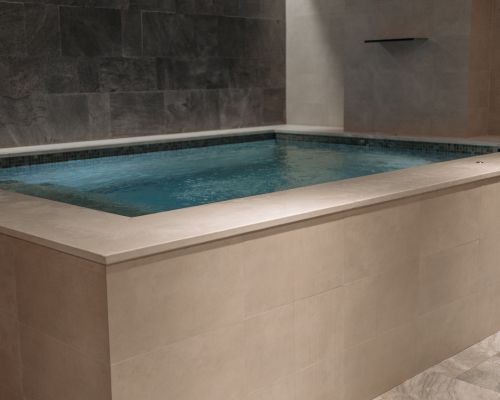
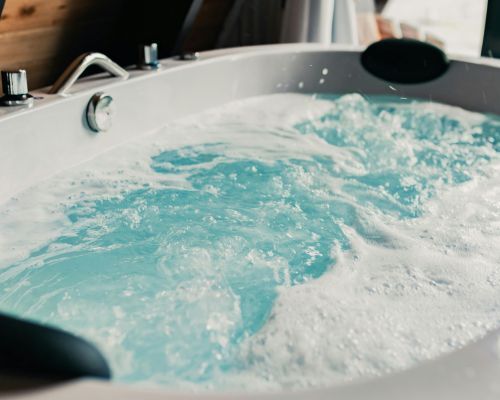
Component Quality Indicators
Quality spas use marine-grade wiring and corrosion-resistant jets. You should look for stainless steel jets and fittings, as they resist rust and mineral buildup better than plastic alternatives.
The cabinet material affects both aesthetics and durability. Synthetic cabinets resist moisture and require minimal maintenance, while wood cabinets need regular treatment to prevent rot.
Pillow and cover quality indicate overall construction standards. UV-resistant pillows and covers with proper density foam showcase attention to detail in manufacturing.
Professional Installation and Spa Longevity
Professional installation plays a crucial role in maximizing your spa's lifespan. A certified technician ensures proper electrical connections, plumbing setup, and structural support.
Foundation and Structural Support
Your spa needs a stable, level foundation to prevent stress on the shell and components. Professional installers create appropriate concrete pads or reinforced decking platforms that can support the weight of your filled spa.
Electrical and Plumbing Setup
Correct electrical installation prevents system damage and safety hazards. Licensed electricians install dedicated circuits, GFCI protection, and proper grounding according to local codes.
Proper plumbing installation prevents leaks and maintains optimal water flow. Professionals secure all connections, install shut-off valves, and ensure proper drainage systems.
Strategic Positioning
Expert positioning considers factors like:
- Access for maintenance
- Protection from elements
- Proper ventilation
- Distance from power sources
- Local building codes
Professional vs DIY Installation
A professionally installed spa typically lasts 15-20 years with regular maintenance. DIY installations often lead to premature failures and void manufacturer warranties.
Make sure to choose certified installers who understand your specific spa model. Ask for proof of insurance and references before hiring installation services.
Schedule annual professional inspections to catch potential issues early. This preventive approach helps extend your spa's functional life and maintains its value.
Comparative Lifespan of Spa Brands in Van Nuys, CA
Different spa brands in Van Nuys show varying lifespans based on quality, maintenance, and usage patterns. You can expect most high-quality spas to last between 10-20 years with proper care.
Premium Brand Longevity
Top-performing brands in Van Nuys:
- Hot Spring Spas: 15-20 years
- Jacuzzi: 15-20 years
- Caldera: 12-18 years
- Sundance: 12-17 years
Local climate conditions in Van Nuys can affect your spa's longevity. The warm, dry weather means less strain on heating systems but requires extra attention to chemical balance and cover maintenance.
Maintenance Impact by Brand
Regular maintenance plays a crucial role in extending your spa's life. You'll need to perform weekly water testing, monthly filter cleaning, and quarterly deep cleaning regardless of brand choice.
Factors Affecting Brand Performance
Factors affecting spa lifespan in Van Nuys:
- Water quality
- Usage frequency
- Maintenance schedule
- Installation quality
- Cover protection
Mid-Range and Economy Options
Mid-range brands like Dynasty and Viking typically last 10-15 years in Van Nuys conditions. Entry-level brands may have shorter lifespans of 5-10 years.
Your spa's shell material impacts durability significantly. Acrylic shells tend to last longer than rotomolded plastic in Van Nuys's climate, often extending lifespan by 3-5 years.
Enhancing Spa Life Through Upgrades and Accessories
Regular maintenance combined with strategic upgrades can extend your spa's lifespan well beyond the standard 10-15 years. Quality upgrades not only improve functionality but also protect your investment.
Protective Accessories
A high-performance spa cover acts as your first line of defense. Replacing your cover every 3-5 years prevents water damage and reduces energy costs.
Essential Upgrades for Longevity:
- UV-resistant cabinet panels
- Energy-efficient pump systems
- LED lighting systems
- Chemical automation systems
- Advanced filtration units
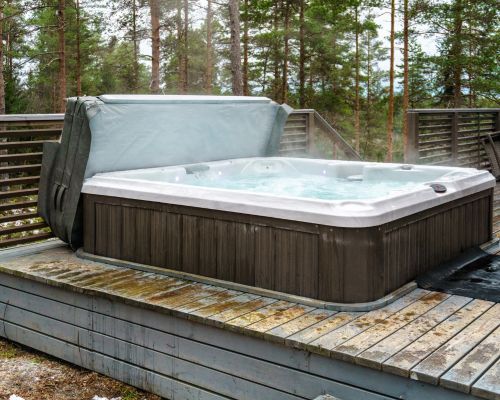
Control System Improvements
Investing in a digital control system allows precise temperature management and reduces strain on components. Modern controls often include smartphone integration for convenient monitoring.
Water Care Enhancements
Water care accessories play a crucial role in extending spa life. An automatic chemical feeder maintains proper sanitization levels and protects internal components from corrosion.
Consider installing an ozone generator or mineral purification system. These additions reduce chemical usage and protect surfaces from premature aging.
Maintenance Tools and Products
Recommended Maintenance Tools:
- Digital water testing kit
- Filter cleaning wand
- Surface cleaning supplies
- Pipe cleaning solution
- Shell restoration products
Adding a handrail and steps not only improves safety but also prevents structural stress from improper entry and exit. Sturdy, weather-resistant materials work best.
A quality thermal blanket under your main cover reduces heat loss and moisture damage to the cover's underside. Replace it annually for optimal performance.
Extend Your Spa's Life with Professional Maintenance
Here at Newt Pool Cleaning Service, we understand that regular, professional maintenance is key to maximizing your spa's lifespan in Van Nuys and the surrounding San Fernando Valley.
Our certified technicians specialize in comprehensive spa care, from water chemistry management to component inspections that catch potential issues before they become costly repairs.
With our scheduled maintenance plans, you can enjoy your spa for years beyond the average lifespan without the hassle of DIY upkeep. Make Newt your go-to pool cleaning and repair service providers today and schedule a spa assessment and learn how our tailored maintenance programs can protect your investment while keeping your spa in perfect condition year-round.
